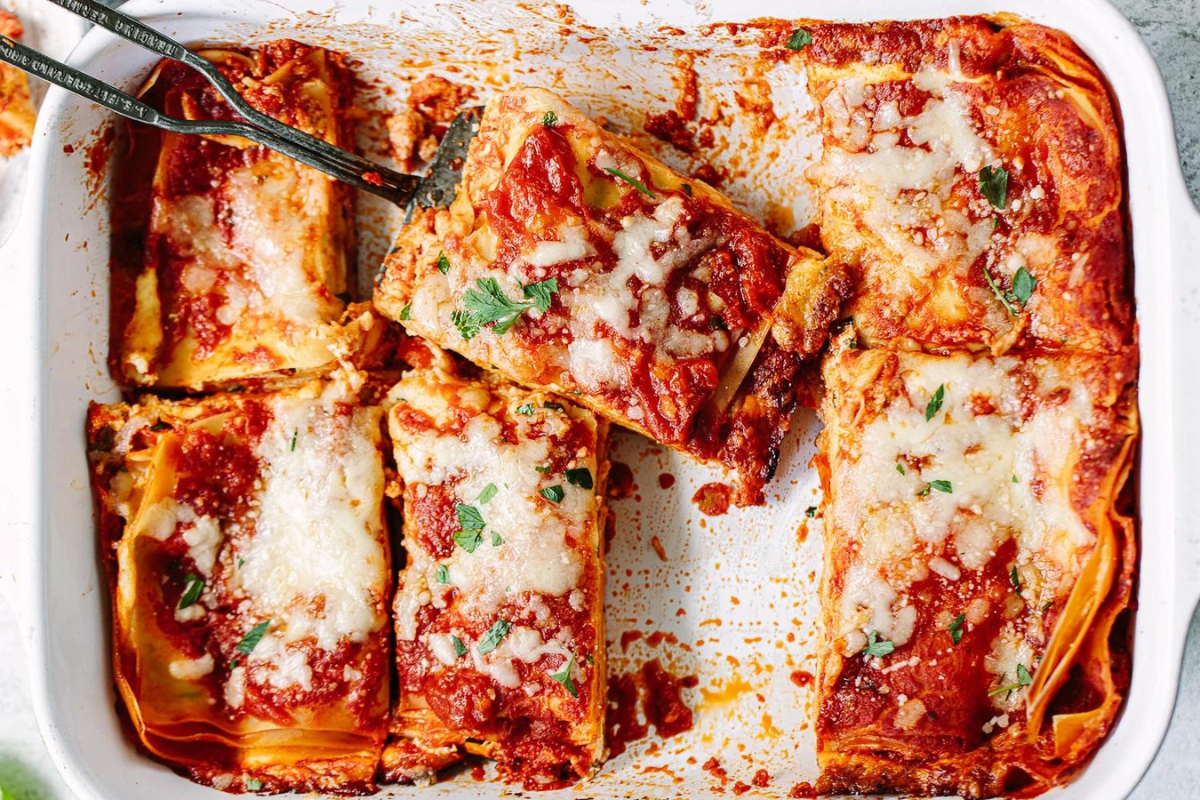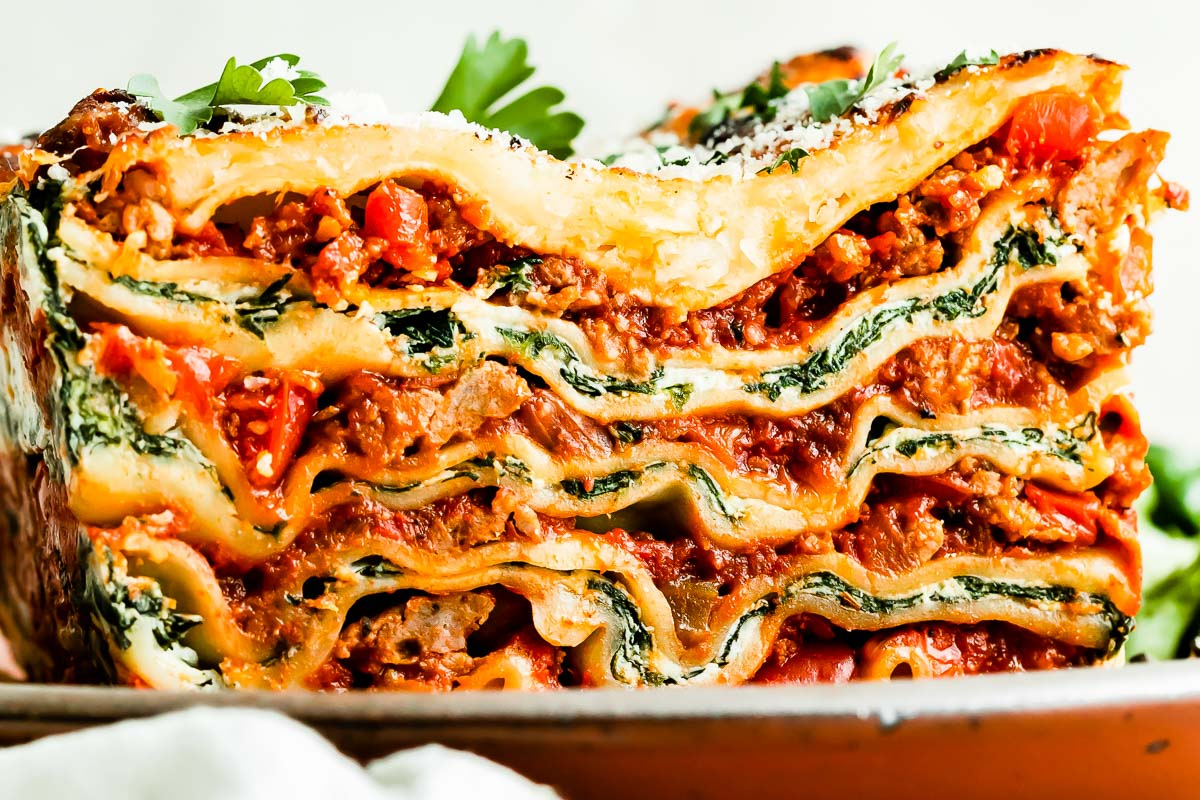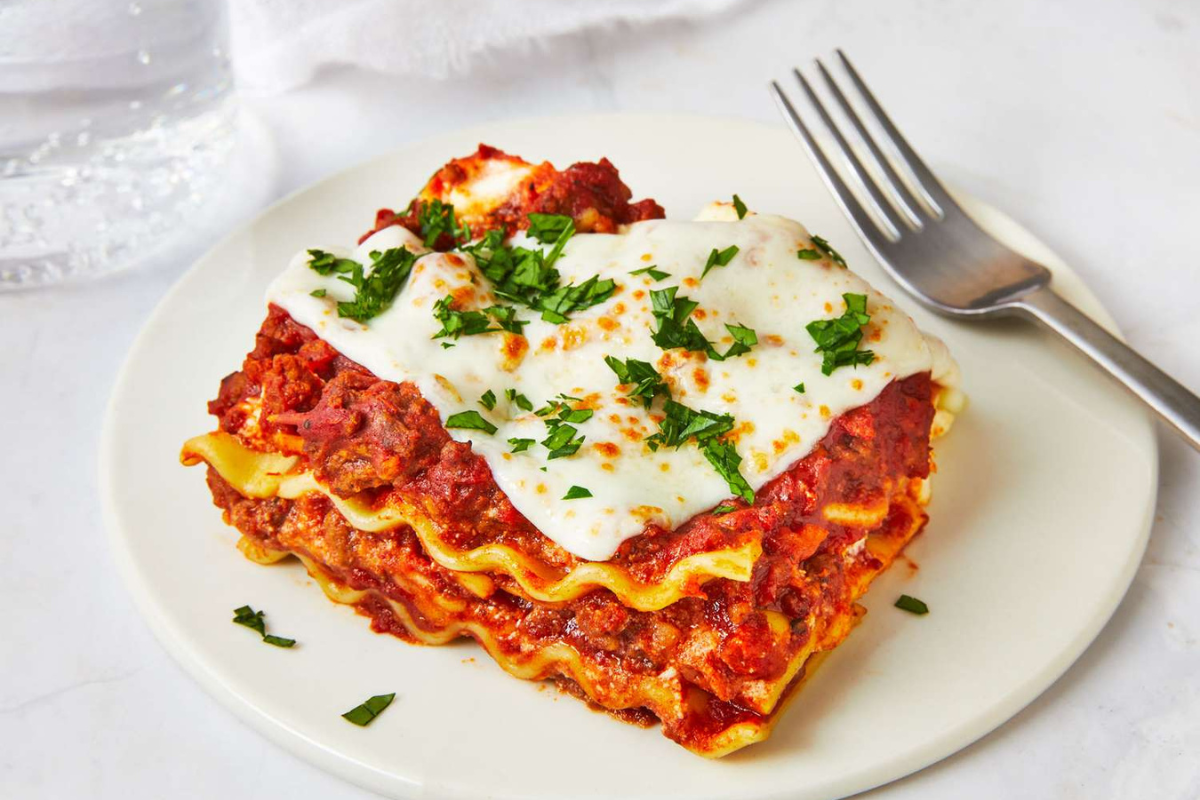While the American version leans towards meat-heavy, cheesy iterations, Italy boasts a diverse landscape of lasagna variations, each region offering its unique spin on the beloved dish. Let’s embark on a culinary adventure through Italy, exploring the history, regional nuances, and the very essence of Lasagna the Italian way.

Photo: Simply Recipes
Lasagna, a dish synonymous with comfort, cheesy goodness, and family gatherings, holds a special place in the hearts and stomachs of many. But its journey, particularly in Italy, where it originated, is far richer and more nuanced than the casserole we often imagine. This article delves into the fascinating history, regional variations, and cultural significance of lasagna in Italy, revealing a dish that is as diverse and vibrant as the country itself.
From humble beginnings to layered luxury
The origins of lasagna are shrouded in mystery, with some tracing its roots back to ancient Greece and Rome, where flatbreads were layered with meat and sauces. However, the dish we recognize today likely emerged during the Middle Ages in central and northern Italy. Initially, lasagna was a simple peasant food, made with readily available ingredients like homemade pasta sheets, ricotta cheese, and vegetables. Meat ragu, a luxury then, was rarely included.
Over time, lasagna evolved with regional influences and social changes. In Emilia-Romagna, the birthplace of “lasagne al forno” a kind of baked lasagna, the rich ragu Bolognese became a key component. Naples, known for its opulent cuisine, created the decadent “lasagna alla napoletana,” featuring layers of sausage, meatballs, and ricotta. Liguria, a coastal region, offered a vegetarian version with pesto instead of ragu, showcasing the adaptability of the dish.

Photo: Familystyle Food
A symphony of flavors and textures
Despite its regional variations, some core principles unite Italian lasagna. The pasta, traditionally made with egg-based dough though durum wheat is now common, provides a firm yet yielding base. The ragu, simmered for hours, offers a complex depth of flavor, often featuring ground meat, vegetables, and spices specific to the region. Béchamel sauce, creamy and smooth, adds richness and balances the savory notes. Finally, cheese, typically Parmigiano Reggiano, melts into the layers, creating a satisfyingly gooey texture.
But the beauty of lasagna lies not just in its ingredients, but in the layering technique. Each element contributes to the overall symphony of flavors and textures. The thin pasta sheets separate the richness of the ragu and béchamel, while the cheese binds everything together. The final bake transforms the dish into a cohesive whole, with browned edges and a tantalizing aroma.
Lasagna is a symbol of family, tradition, and celebration. In Italian households, it’s often reserved for special occasions, prepared with love, and passed down through generations. The act of making lasagna together strengthens bonds and fosters a sense of shared heritage.

Photo: Plays Well With Butter
Lasagna’s cultural significance extends beyond the home. It has featured prominently in Italian cinema, literature, and even music, becoming a beloved icon of Italian cuisine worldwide. Its adaptability has allowed it to travel and evolve, with each country adding its interpretations and flavors.
A symphony of layers: Exploring regional lasagna variations in Italy
Emilia-Romagna: Considered the birthplace of lasagna, Emilia-Romagna boasts the iconic “Lasagna al Forno.” This is the lasagna most familiar to the world, featuring layers of silky, egg-based pasta sheets, a rich “ragù alla Bolognese” simmered for hours, and a creamy béchamel. The ragù itself deserves a standing ovation, a slow-cooked masterpiece of ground beef, pork, pancetta, vegetables, and red wine, seasoned with aromatic herbs. Parmigiano-Reggiano, aged to perfection, adds a final flourish of salty depth.
Liguria: Moving west to Liguria, the sun-drenched Italian Riviera, we encounter a completely different take on lasagna. Here, “Lasagna alla Genovese” reigns supreme, a vegetarian delight where vibrant pesto takes center stage. Layers of fresh pasta are generously coated with a pesto made with Ligurian olive oil, fragrant basil, pine nuts, and parmesan cheese, creating a symphony of green flavors. Ricotta and mozzarella add creamy richness, while the absence of meat makes this lasagna perfect for lighter palates.
Sicily: Traveling south to the vibrant island of Sicily, we find a lasagna world as diverse as its landscape. “Lasagna Siciliana” reflects the island’s culinary heritage, showcasing ricotta as the star ingredient. It often combines ricotta with spinach, eggplant, and even sardines for a unique twist. Ragù, when present, is lighter and often features local sausage like “Salsiccia al Finocchio”, a kind of fennel sausage.

Photo: Southern Living
Regional lasagna variations go beyond mere ingredients. They reflect local traditions, cultural significance, and the generations-old wisdom passed down through families. Making lasagna becomes a ritual, a celebration of togetherness and shared love. In Emilia-Romagna, it’s often the centerpiece of festive gatherings, while in Liguria, it’s enjoyed on picnics with breathtaking sea views. Sicily’s lasagnas showcase the island’s resourcefulness and love for fresh, seasonal produce.
Today, lasagna continues to evolve. Vegetarian and vegan versions are gaining popularity, reflecting changing dietary preferences. Chefs are experimenting with new ingredients and techniques, pushing the boundaries of the traditional dish. Yet, the essence of lasagna – its layered comfort, rich flavors, and cultural significance – remains unchanged.

